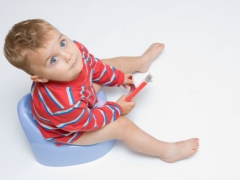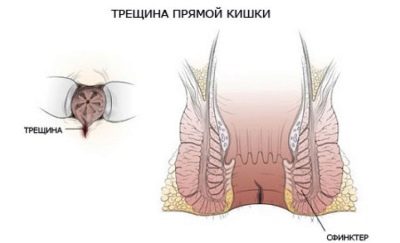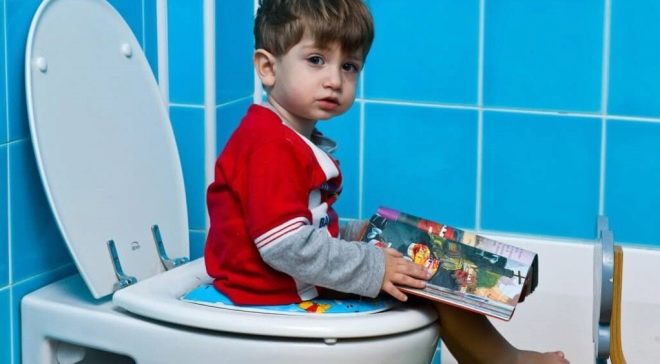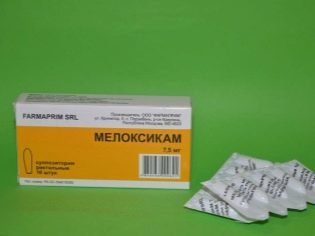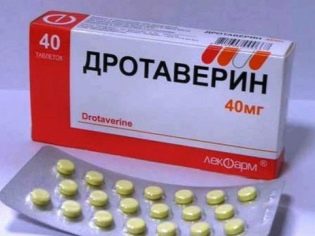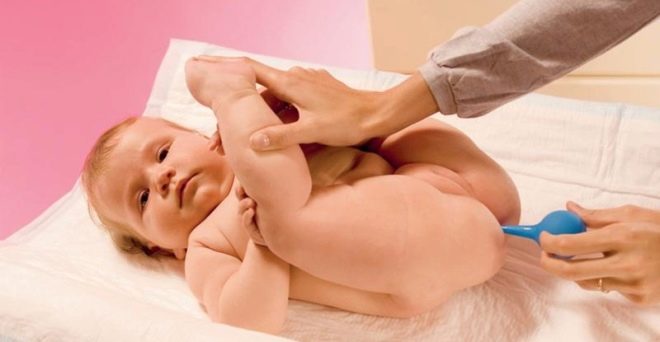How to treat anal fissure in a child?
Diseases of the rectum in infants cause quite unpleasant symptoms. One of these pathologies is an anal fissure. This article tells you what parents should know about this pathology in children.
What it is?
Violation of the integrity of the wall of the end section of the rectum is called an anal fissure. This pathology is quite common.
In adults, the disease is somewhat more common than in babies. A child can get sick at any age. In boys, the disease occurs as often as in girls.
Cracks in the anus in the structure of diseases of the rectum occupy the third place after hemorrhoids and colitis. The length of this defect may be different. In most cases, children have cracks up to 2-3 cm in size.
In a newborn baby, the length of the defect may be less, but the disease proceeds with the appearance of many uncomfortable symptoms. The crack is localized in the anus, near the anal sphincter.
Causes of
Quite often, various traumatic factors lead to the development of an anatomical defect in the region of the end section of the rectum. damage during bowel movements. This contributes to the constant straining during the trip to the toilet.
Problems with a child’s chair are mainly due to chronic bowel disease.
Various pathologies of the end sections of the gastrointestinal tract, manifested by colitis or proctitis, according to statistics, are the most common causal factors in the appearance of defects of the rectal mucosa. The damage width in this case is usually 1-3 mm.
The crack is a wound surface that can become an entrance gate for the entry of pathogens.
Initially, the defect looks like a small tear of the mucous membrane, which is located next to the anus. After some time, the size of the developed anatomical defect increases. Its edges begin to thicken, and the central part is loosened.
In appearance, such a defect resembles a trophic ulcer. Usually, this pathological process is aggravated by the development of a strong sphincter spasm.
Prolonged spasm of the end parts of the intestine leads to the fact that the full blood supply and innervation of the damaged area and the anus is disturbed. This condition contributes to the chronic process.
Lack of treatment leads to the fact that the acute process goes into a persistent chronic form. In this case, the treatment of long-term current pathologies of the anus is quite difficult.
Persistent constipation in babies are often the main cause of anal fissures. Hard stool, passing through the distal colon, contributes to the damage to the delicate mucous membranes.
This situation not only leads to the development of chronic colitis and proctitis, but also forms a crack in the anus. The first manifestations of persistent constipation, according to statistics, appear in children aged 2-3 years.
Another frequent cause of the appearance of anal fissure in childhood is worm infestation. Parasites living in the intestines, produce toxic products of their life, which have a damaging effect on the mucous membranes. Also, worm infection causes persistent constipation in a child.
The appearance of a child with a strong itch in the area of the anal sphincter should draw the attention of parents to this problem.
Symptoms
Manifestations of anal fissure in babies can be very different. In infants the disease is manifested by the appearance of strong crying during the act of defecation. Some kind of external signs of the disease on the pope of the baby may not be.
Changes in behavior and a sharp deterioration in the mood of the child during bowel movements should strongly alert the parents and become a reason for going to the doctor.
The appearance of too hard or “sheep” feces is also an unfavorable symptom. Long-term preservation of this clinical trait would entail very unpleasant consequences in the form of the development of colitis or traumatic damage to the rectal wall with the development of anal fissure.
Normally, the child’s chair should be soft, brown in color, in sufficient volume. Undigested pieces of food eaten can be stored in it.
The appearance of bloody veins in feces is another dangerous symptom. This symptom quite often indicates the presence of bleeding in the final sections of the large intestine.
During exacerbation of anal fissure, the child's behavior changes dramatically. Toddlers become moody, often whimpering. Children up to three years more often ask for hands.
While in the crib, the sick child often changes position of the body. Prolonged sitting can contribute to increased pain.
This symptom is especially pronounced in schoolchildren. A sick child is quite difficult to endure all 5-6 lessons at the desk. Some babies say that they have increased pain after hot baths.
Collecting anamnesis in an older child has an important diagnostic value. As a rule, kids are good at telling the doctor or mom about their concerns.
While communicating with the child it is very important to establish psychological contact. Anal fissure is a very delicate problem, especially in adolescence, when a child separates the boundaries of his personality from the outside world.
When communicating with a teenager about the symptoms he has, try to make the kid feel that you are on his side. Friendly attitude and support are very important to him during this period.
Be sure to explain to your child that this is a disease that needs to be treated. During the conversation, emphasize that, subject to all recommendations of the doctor, this disease will heal quickly.
In toddlers who still cannot tell their parents about their concerns, you should rely on the totality of symptoms that appear in the child.
Adverse frequent clinical signs of defects in the mucous membrane of the rectum include:
- the appearance of pain during the act of defecation;
- large amounts of mucus and blood streak in feces;
- increased pain during active movements or after hot baths;
- persistent constipation;
- strong change in child behavior.
The appearance of these symptoms should motivate parents to seek advice from a pediatric proctologist.
Treatment
Assign the treatment of defects of the anal zone proctologists. These specialists carry out the necessary complex of examinations, allowing to exclude associated pathologies and make the correct diagnosis.
In some cases, gastroenterologists and surgeons join the treatment. The need to refer to these specialists determines the treating proctologist.
To eliminate the adverse symptoms applied The whole complex of treatment, which includes many very different methods:
- prescription drugs;
- adherence to the day and medical nutrition;
- carrying out the regular hygienic regimen necessary for a specific child.
The main goal of therapy is to eliminate all provoking causes that led to the development of damage in the anal sphincter area.
Drug treatment in the treatment of anus fissure is important.Drugs can restore the integrity of the mucous membranes, promote rapid regeneration (recovery), and also have anti-inflammatory effect.
Medications are usually prescribed in different forms of release. Quite often, various candles and ointments are used to treat the crack of the anus.
The purpose of treatment in the acute stage of the disease is to remove pain and a pronounced spasm in the anal sphincter. The most effective means for this is antispasmodics. They have a pronounced relaxing effect on smooth muscles, including the intestinal wall.
«Drotaverinum"Or" Meloxicam "also have an excellent anti-inflammatory effect.
Rectal suppositories are necessary in the treatment for the rapid healing of the injured tissues of the end section of the intestine.
Sea buckthorn suppositories have an excellent anti-inflammatory effect. They can be used in toddlers, even the youngest age. These medicines have a minimum of side effects and can be used very safely in babies.
The frequency and duration of use of these drugs is determined by the attending physician.
Many medicinal suppositories contain several biologically active components at once, providing a whole range of actions. Their use helps to reduce pain, has an anti-inflammatory effect, helps to prevent secondary bacterial infection of damaged tissues, as well as they are necessary for rapid regeneration.
Rectal suppositories containing propolis, help relieve severe inflammation in the anal zone and prevent the development of dangerous complications of the disease.
All candles are inserted into the rectum. Usually the multiplicity of use is 1-2 times per day. It is better to introduce suppositories after carrying out hygienic procedures. Before inserting the candle into the anus, you should talk to the baby and explain to him what will happen.
For the youngest children should carry out such treatment in the form of a game. This helps to prevent a strong fright at the baby during the insertion of a candle into the anus.
For suppositories, which include herbal ingredients, there are contraindications. Basically, they consist in the presence in the child of an allergic reaction to the individual components of the drug. To carry out such treatment should be very carefully, observing all precautions.
If your child has severe allergies to various substances, you must first consult with your doctor about the possibility of using a particular medication.
To soften the feces used a special diet. It includes mandatory compliance with the drinking regime. The large intestine is an organ involved in the reabsorption of water that enters the body from the outside.
If the fluid is not enough, then over time the baby develops symptoms of solid feces. For normal density of fecal masses, the child must drink the daily norm of the age of the fluid.
For the formation of soft stools in the children's diet must be present coarse fiber. It promotes the formation of fecal masses that are normal in volume and do not cause constipation in the baby.
Rough fiber is found in all fruits and vegetables. For the process of normal digestion, the baby must eat a sufficient portion of plant food during each meal.
To eliminate the pain syndrome that appears in the anus area in the presence of anatomical defects, doctors often recommend using various microclysters.
This treatment is carried out by the course. Medicinal herbs decoction or boiled water is used as a enema fluid. Quite often, children use pharmacy chamomile.
Microclysters should be carried out as carefully as possible in order not to injure the damaged rectum.
Various physiotherapeutic methods are used to eliminate the adverse symptoms of chronic anal fissure in babies.
Ultrasound with Novocain, Magnetotherapy or Phototherapy have a moderate anti-inflammatory and wound-healing effect. These methods will be effective only when they are appointed by courses. They also help eliminate a strong spasm of the anal sphincter and improve the blood supply to the pelvic organs and the abdominal cavity.
In some cases, conservative treatment is ineffective. This situation mainly occurs when the baby has a significant defect volume. In this case, surgical treatment is required. The scope and type of surgery is chosen by the pediatric surgeon or the operating proctologist.
Surgical treatment in this case usually consists in excision of the affected tissues and stitching the wound areas between them.
After the operation, the obtained biological material is sent to the laboratory. There is a histological study. It helps doctors eliminate dangerous rectal neoplasms, which are often "dumb" and do not cause the appearance of specific symptoms.
Also, with the help of histological examination, it is possible to establish the morphological characteristics of the disease, which caused the development of an anal fissure in a baby.
You can find out how to treat anal fissure with folk methods by watching the video below.
